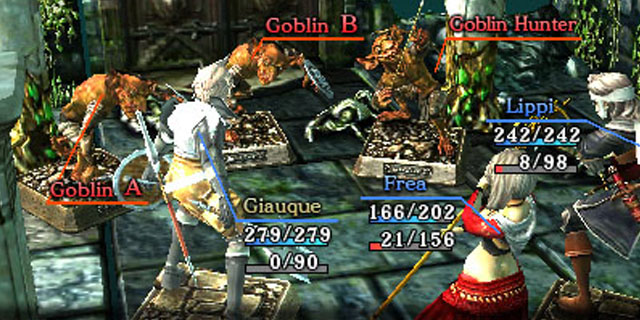
The 3DS is still somewhat lacking in the RPG department, especially compared to its predecessor’s insane library, but the eShop has started to provide some inroads for the genre. Crimson Shroud from Level-5 is one such eShop offering. It brings with it a unique aesthetic and interesting mechanics, seeking to replicate a tabletop pen-and-paper session in many ways.
Instead of the usual presentation methods, Crimson Shroud represents the player characters and enemies as static miniatures placed in a crude dungeon model. Similarly, narration is often directed at you, the player, as if a gamemaster were describing your surroundings from behind a rules screen. The illusion falls a little short when it comes to combat, however, as there is no movement or noticeable range in combat despite the use of minis and a map of sorts. Instead, combat plays out like any other menu-driven RPG, with the exception of the dice.
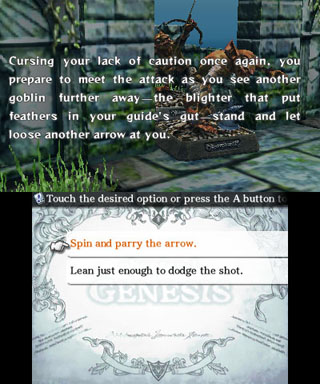
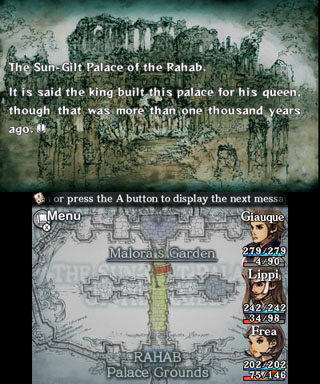
Oh, don’t worry! You won’t have to manually execute every to-hit and damage roll. That’s one of the perks of this being a video game, after all. But you can add extra dice to those rolls and “roll” them to increase your chances of hitting or damage. And, oddly, there will still be some to-hit rolls required from time to time, usually for magical effects whose results are not as certain. You will also roll a giant handful of colorful polyhedra when the situation calls for it, such as when ambushed and checking to see how many turns you are at a disadvantage. On the whole it is an interesting gimmick, but it is really the only change from mindlessly hitting the A button to the point where basically every other mechanic in the game revolves around the dice at some level.
The dice themselves are earned via an elemental combo system. The longer you — and monsters — chain together moves or skill of different elements (lightning, earth, air, ice, fire, water, light and dark) and earn a better die with each step from the third on until one of three things happen: someone repeats an element; someone chains an element into its trump (listed in that order, although light and dark are trumps to each other and exist separately); or someone uses a neutral-element ability. Each turn a character can take two actions (one skill and one attack, spell or item), and only the first elemental action counts toward the combo count, so you can usually manipulate that to your advantage. Dice not used during combat can be cashed in afterward to give you more bartering points when it comes time to collect spoils.
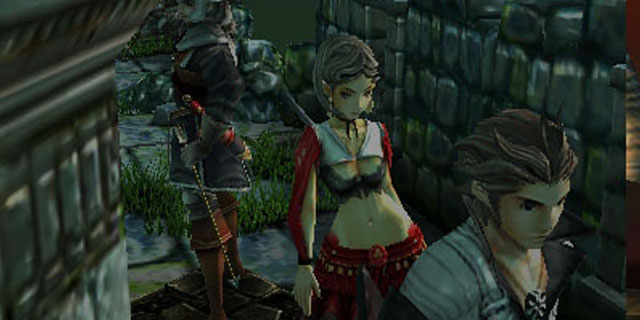
Everything dropped by your defeated enemies has a barter value. You are given a bunch of points that you have to spend in order to pick up anything, from fifteen or so for a healing potion to a hundred for a new weapon to three hundred for a unique drop. Every die you sacrifice adds its value to your point pool (a d4 adds four, a d8 adds eight, etc.), so you will probably have to hoard the higher-valued ones if you really want to make a serious change to your options, although a few points here and there can make a difference if things are tight.
There is one aspect of traditional RPGs that is no present in Crimson Shroud, however, and that is the concept of levels. Put simply, your characters do not level up as you defeat enemies. The only way to increase your stats is to find better equipment, although you can also make equipment better by melding identical items together or imbuing them with magic scrolls. It’s a strange system, but it works well within the framework provided.
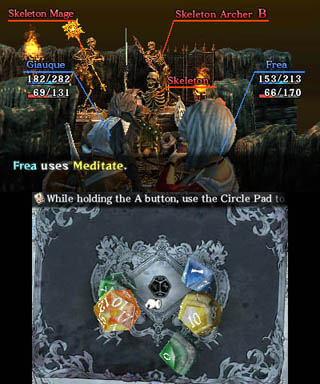
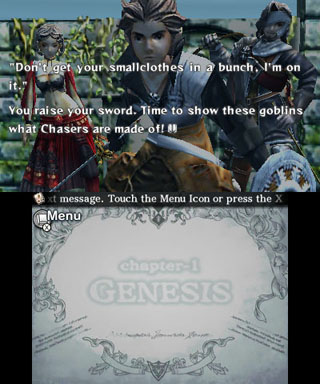
You might have noticed that I haven’t brought up what is traditionally the most crucial aspect of any RPG, the plot. Well, that’s because there really isn’t much of one here. As presented, Crimson Shroud isn’t really a full game so much as it is the first chapter of one. You get some backstory about the big picture, intercut with flashbacks of your three-man party (made up of the usual fighter, archer/rogue and magic user) as they investigate a ruin. They are chasing a legend about a powerful artifact (hint: it’s reddish, and it’s a shroud) as well as some mysteries stemming from a previous mission, but that just leads to more backstory. The game ends on a sort of cliffhanger after you defeat the final boss, potentially setting up further installments. Whether or not we get them remains to be seen.
If we do get a sequel, I hope that a couple of issues are addressed. The touch-screen controls are a little stiff when it comes to selecting options on menus or various information pages. They work well enough when moving around the map or rolling the dice, but everything else felt very hit-or-miss. Traditional controls are mostly fine, but feel a little awkward when it comes to rolling dice.
My other problem, however, is less forgivable. There is one point, on around the second level of the dungeon, where you cannot advance without finding a rare item. This item is dropped by a respawning skeleton mage some of the time… and the encounter that generates the skeleton mages only does that some of the time (and not up front, either). I found it on my first try, then died after using it without having saved. Whoops. Finding it a second time took me several hours of re-fighting that same encounter, over and over again. Not fun.
Crimson Shroud is not a long game. Even with an artificial inflation of a particularly stubborn rare drop I only clocked in about ten or eleven hours. For the price, that isn’t terrible, but for an RPG it’s basically just a sampler. The option of a New Game+ exists, but I didn’t really like the game enough to investigate it. There isn’t enough here to really recommend, and nothing offensive enough to warn against. For eight bucks and ten hours, you can investigate Crimson Shroud on your own without too much hardship. For myself, I will probably give any sequel a shot just out of curiosity towards the world, if not the actual mechanics for exploring it.
Pros: Unique presentation
Cons: Finicky menu touch controls, annoying required rare loot spawn



















